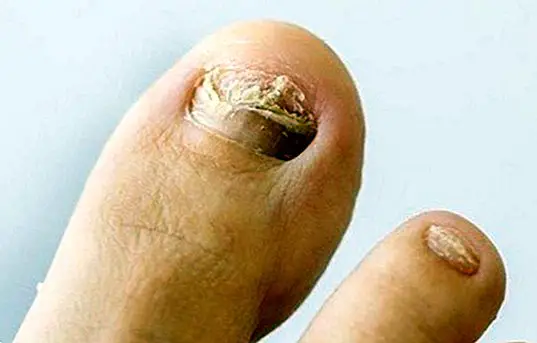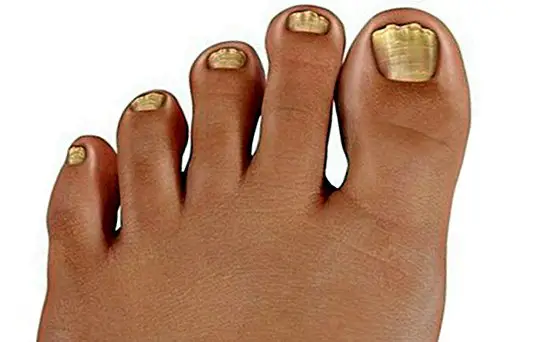Why fungi appear on the feet and what symptoms produce
The foot fungus, also known more properly as Onychomycosis; they are a relatively common problem that more than half of the global population suffers.
These are generated by the lack of proper care of the feet; is an infection that is established in the fingers and that causes a discoloration and fragility of the nails that are in these. There are different types of fungi and ways to contract them, which can only be eliminated and eradicated under treatment.

It should be noted that the fungi of the feet are generally formed in warm and humid environments, these being part of the dermatophytes; this means that the showers, the pools and the dressing rooms have been, the ideal place for the production of mushrooms.
In this article we will cover, in a timely manner, aspects such as the causes that produce the appearance of fungi on the feet, and the symptoms they cause in the people who possess them; as well as the most effective tricks to avoid this type of training and to know, ergo, its biological foundations.
Causes of the appearance of fungi on the feet (onychomycosis)
The appearance of fungi on the feet can be caused by different factors, these by environmental characters or by others described below:
- Through a cut or opening: It is well known that the way in which infections are commonly generated is through openings or cuts in the skin; Fungal organisms such as ringworms are placidly established in this type of cell formations.
- Use of non-ventilated shoes: As the footwear that is normally used does not have an optimal amount of ventilation, the fungus can easily develop and then continue to inhabit the affected area once it has developed on your feet. The zoonitic mycoses in this case are distributed towards the nails and villi.
- Walk in humid environments: walking in humid environments promotes the formation of fungi on the feet, especially if it is in areas such as changing rooms or public showers; ecosystems for these multicellular organisms.
- Low blood flow in your feet: Having a low blood flow in the feet allows the infection that causes the fungus in the feet to act more easily, since your body has a lower capacity to detect the infection and fight against it through the immune system.

Common symptoms due to foot fungus
When an infection occurs in the feet and the growth of a fungus occurs, there are a number of common symptoms that are visible in people suffering from onychomycosis; These are the following:
It may be the case that there is mild pain in the affected area; this symptomatology can be intensified if the infection is extensive; In addition, it has been an entry for various germs that can cause other infections.
There are alterations in the affected nails, which change color and shape, taking on an unsightly aspect.
These alterations are divided into several groups:
1. The distal subungual: which is the most common affection in the big toe, the edge of the line begins to have a yellowish color and begins to have more thickness, where the surface becomes rougher and runs the risk of fragmenting.

2. The proximal subungual: in which there is damage to the root of the nail, and with which you can see yellowish and / or whitish areas that move towards the free end - being a rare type of onychomycosis. It is more likely in people who have AIDS.
3. The superficial white: the latter begins with a bleaching of the surface of the nail; they appear first as small points that later join and form larger areas, these developed by the melanonychia, which is caused by different fungi of the genus Trichophyton. The nail becomes intensely dark, to the point of being necessary a medical diagnosis so that it is not confused with a subungual hemorrhage.
4. Onychodystrophy: which in most cases is the most serious and rare case of nail fungus; This is totally deformed, becoming thick, curved and easily broken into fragments.
If you get any of these symptoms, do not hesitate to consult a podiatrist who can diagnose you in time a state named above. The important thing here is always to make sure you have the proper precautions for the proper care of your feet. This article is published for informational purposes only. It can not and should not replace the consultation with a Physician. We advise you to consult your Trusted Doctor. ThemesFungal infections


